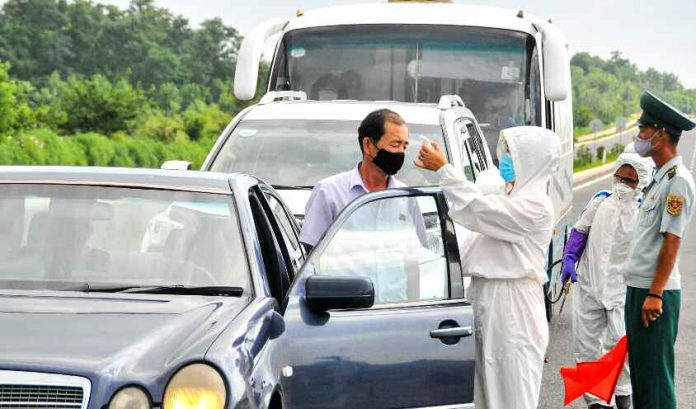
Daily NK has learned that North Korea has been strictly controlling public access to Pyongyang since North Korea’s failed test launch of an ICBM on Mar. 16, when the missile exploded in the sky above the North Korean capital.
According to a Daily NK source on Thursday, North Korean authorities have reinforced checkpoints at entry points to Pyongyang and commenced thorough inspections of inbound vehicles and people.
It remains unknown exactly when North Korean authorities bolstered their entry inspections into Pyongyang, but the area surrounding Pyongyang was reportedly in a state of heightened alert from the failed missile test on Mar. 16 to right before the launch of North Korea’s so-called “Hwasong-17” ballistic missile from Sunan Airfield on Mar. 24.
In particular, inspections were reportedly quite strict at checkpoints into Pyongyang from the neighboring city of Pyongsong, South Pyongan Province, with some people turned away from entering the capital.
Inspections have intensified even in Pyongyang itself. One provincial resident who entered Pyongyang using somebody else’s residency card was dragged off to a collection point after he was busted in a nighttime hotel inspection.
Normally, the alert posture in Pyongyang relaxes between the time of the late North Korean leader’s birthday on Feb. 16 and late North Korean founder Kim Il Sung’s birthday on Apr. 15. This year, however, the authorities have intensified inspections and the local alert posture in March as well, a fact many people found strange.
South Korean lawmaker Ha Tae-keung, a member of the legislature’s National Defense Committee from the People Power Party, met with reporters after receiving a closed door report from the Ministry of Defense on Tuesday. He said missile fragments rained down on Pyongyang after the Hwasong-17 ICBM launched on Mar. 16 exploded several kilometers above the city. He said civilians suffered property damage, though it remains unconfirmed whether there was loss of life.
In fact, exactly what losses North Koreans suffered from the rocket’s debris remains unknown.
However, given that people could see the explosion with the naked eye and debris rained down on homes, North Korean authorities may have limited access to Pyongyang to deal with the situation and keep things quiet.
Meanwhile, North Korean authorities have come under fire for testing the missile from Sunan near Pyongyang, despite the danger to civilians.
Ha said South Korea never launches a missile from the west side of the country toward the east because debris could fall on people in the event of a failure, but North Korea conducted a test that could endanger its citizens because the regime cares little for human rights, public welfare, or safety.
In fact, North Korea tends to fire long-range missiles from inland regions close to the country’s western coast.
Yang Uk, an associate research fellow at the Asan Institute for Policy Studies, told Daily NK that when North Korea fires long-range missiles at high angles, it must do so from as far west as possible to avoid impacting Japan.
He said a dangerous situation could arise when a launch site is near a civilian area, as was the case on Mar. 16, but North Korea authorities apparently used Sunan Airbase as a launch site anyway because, from their perspective, it was more important that the missile production and assembly facilities are near Pyongyang.
Daily NK reported in 2020 that North Korean authorities were building the country’s largest missile production complex in Sinni-dong, Hyongjesan District, Pyongyang. The complex would be responsible for manufacturing and maintaining all kinds of missiles, from multiple rockets to ICBMs, as well as researching tactics and strategies.
Please direct any comments or questions about this article to dailynkenglish@uni-media.net.

















